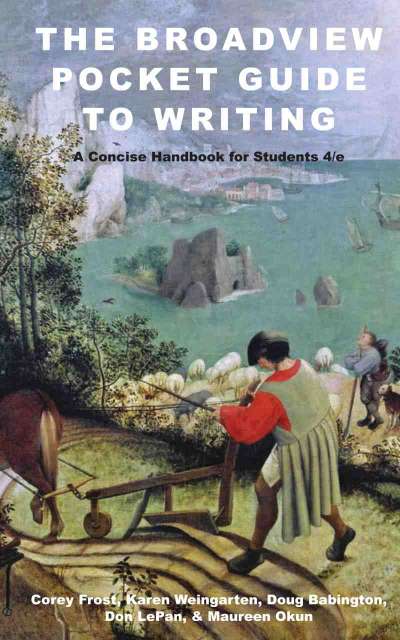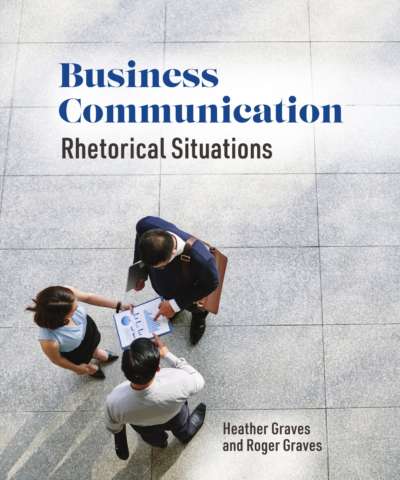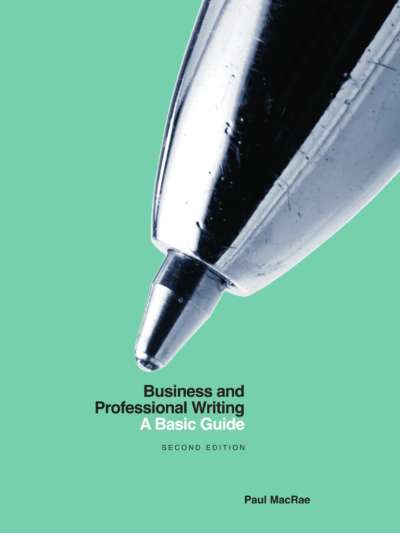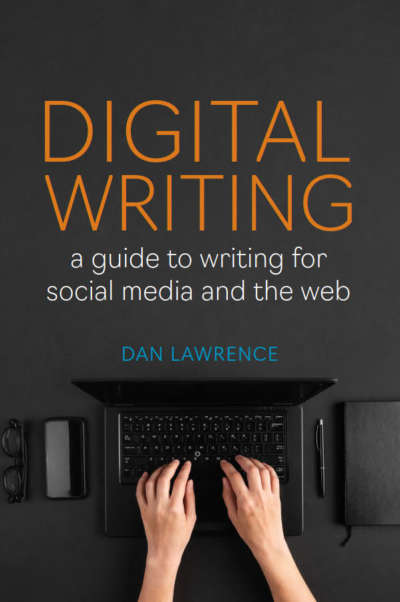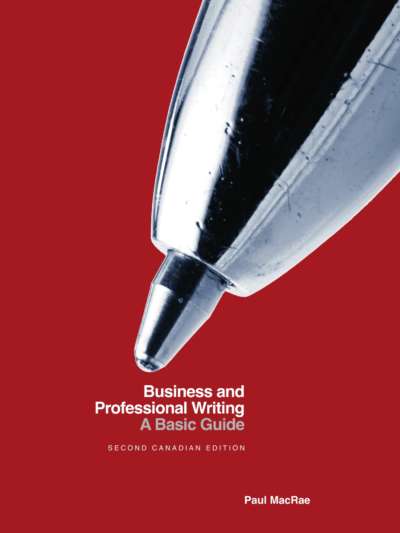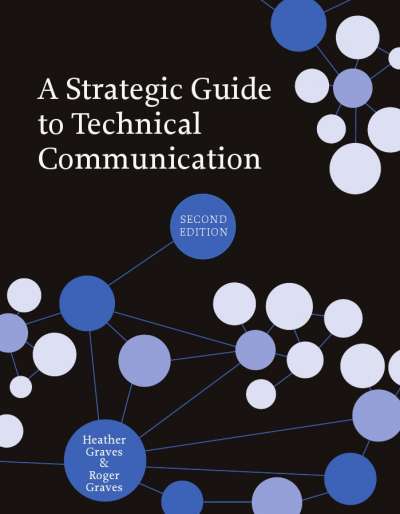This compact but complete guide shows that less is more—with fewer extraneous details getting in the way of students trying to learn on the run, it allows them to focus on the most important principles of effective technical communication. The Concise Guide takes a rhetorical approach to technical communication; instead of setting up a list of rules that should be applied uniformly to all writing situations, it introduces students to the bigger picture of how the words they write can affect the people intended to read them. Assignments and exercises are integrated throughout to reinforce and test knowledge.
Comments
“A Concise Guide to Technical Communication packs so much into so few pages. The ten-chapter organization is perfect for courses on the quarter system or as a secondary text in STEM courses. The text covers all of the fundamentals, including visual and online communication and presentations. I like that both the concise and original texts put ethics up front in chapter 2. This concise edition has a visually clean page layout, making it easy to navigate the series of in-class exercises. Graves and Graves have written a clear and concise text, modeling the excellent writing techniques they present.” — Kelly A. Harrison, Stanford University
“Your concise format includes exactly the level of involvement my introductory Technical Communication course needs. Other textbooks have been of high quality, but it was challenging to fit so much material into a 15-week semester. Now, I can easily choose what to highlight within my timeframe—I'm picking from the best, most important elements. With 100 students, that is the incisiveness I NEED! Chapter PowerPoints and test questions save me so much time. With the supplemental blog and author's lively podcast, I feel like I have a private tutor guiding me through the text.” — Lane Rhodes, English Department, UNC Charlotte
Preface
Note to Instructors
Note to Students
Acknowledgments
Chapter One: Audience, Purpose, Genre, and Medium
- What Is Technical Communication?
- How Does Technical Communication Differ from Other Types of Communication?
- Medium: When Does the Media Used for Communication Change It Substantially?
- Audience
- Purpose: Why Are You Writing?
- What Is Genre?
- Why Does Genre Matter?
- What Are Genre Sets?
Chapter Two: Ethical Issues of Technical Communication
- Ethics Frameworks
- Ethics for Students
- How Is Ethics Related to Technical Communication?
- Writing Ethically
Chapter Three: Researching Technical Subjects
- Primary Research: Interviewing
- Primary Research: Conducting Surveys
- Secondary Research: Libraries and Other Online Sources
- Summarizing and Citing Researched Sources
Chapter Four: Writing Technical Prose
- Clarity, Cohesion, Concision
- Defining, Describing, and Explaining
Chapter Five: Visual Technical Communication
- Using Visuals to Communicate Effectively
Chapter Six: Essentials of Workplace Communication
- Audience: Who Are Your Readers?
- Purpose: Goals for Workplace Communication
- Genre: Writing Short Messages (Email, Memos, Letters)
- Writing Messages
Chapter Seven: Progress Reports, White Papers, and Recommendation Reports
- Status or Progress Reports
- White Papers or Information Reports
- Recommendation Reports
Chapter Eight: Reporting Technical Information
Chapter Nine: Technical Communication Online
- Use Structured Documentation
- Converting Documents to Portable Document File (PDF) Format
- Sharing Documents Electronically
- Shared Folders and Documents Posted Online
- Writing and Digital Media: Online Documents, Video, Screencasts, and Podcasts
Chapter Ten: Presenting Technical Information Orally
- Common Speaking Occasions
- Common speaking occasions
- Small group presentations
- Formal speaking engagements
- Presentation slide that shows an example
- Guidelines for Preparing Presentations
- Guidelines for Creating Slides
- Guidelines for Giving Presentations
Heather Graves and Roger Graves are Professors Emeriti of English at the University of Alberta.
The A Concise Guide to Technical Communication instructor site resources provides PowerPoint lectures and quizzes for each chapter of the book. The authors have also created podcasts for each chapter with additional instructional information and help.


